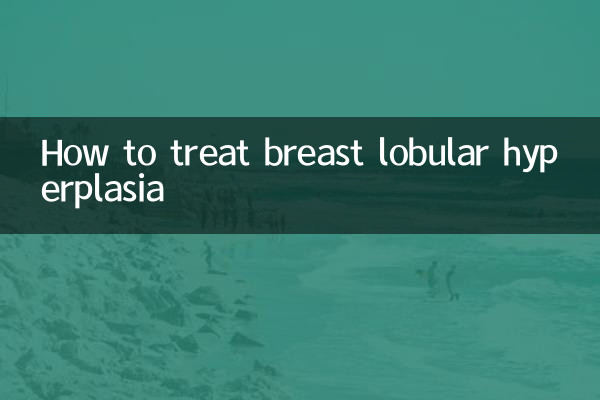How to treat breast lobular hyperplasia
Breast lobular hyperplasia is a common benign breast disease in women. It mainly manifests as breast tenderness and nodularity, and is closely related to endocrine disorders. In recent years, with the improvement of health awareness, how to scientifically treat breast lobular hyperplasia has become a hot topic on the Internet. This article will combine the hot discussions on the Internet in the past 10 days, conduct a structured analysis from symptoms, diagnosis to treatment options, and provide practical suggestions.
1. Typical symptoms of breast lobular hyperplasia

| Symptom type | frequency of occurrence | Feature description |
|---|---|---|
| periodic pain | 85% of patients | Aggravated before menstruation and relieved after menstruation |
| breast nodules | 70% of patients | Granular or cord-like, with unclear boundaries |
| nipple discharge | 15% of patients | Mostly light yellow or milky white |
2. Comparison of diagnostic methods
| Check items | Accuracy | Applicable scenarios | Things to note |
|---|---|---|---|
| breast ultrasound | 90% | First screening test | No radiation, suitable for young women |
| mammography | 85% | Over 40 years old | There is slight radiation |
| needle biopsy | 99% | When suspected of being malignant | Invasive examination |
3. Analysis of mainstream treatment options
According to recent hot discussions on medical forums, treatment options can be divided into three levels:
1. Basic treatment (mild symptoms)
• Adjust lifestyle: reduce caffeine intake (average daily <200mg), choose wire-free bras
• Vitamin therapy: Vitamin E (400IU/day) + B6 (100mg/day) combination
• Traditional Chinese medicine conditioning: The usage rate of proprietary Chinese medicines such as Xiaoyao Wan and Rupixiao reaches 62%
2. Pharmacological intervention (moderate symptoms)
| drug type | Representative medicine | Course of treatment | efficient |
|---|---|---|---|
| hormone regulators | Tamoxifen | 3-6 months | 78% |
| Iodine preparations | compound iodine solution | 2-3 months | 65% |
| Chinese medicine compound | Hongjin Xiaojie Capsule | 4-8 weeks | 71% |
3. Surgical treatment (special circumstances)
• Indications: Solitary lump that persists for 6 months (accounting for about 8%)
• Surgical method: Vacuum-assisted minimally invasive rotational resection (recovery period 3-5 days)
• Recurrence rate: The recurrence rate is about 12% 5 years after surgery
4. Latest treatment progress (hot spots in the past 10 days)
1.Focused Ultrasound Therapy: A report from Wuhan Union Hospital shows that the effectiveness of HIFU treatment has increased to 89%
2.Intestinal flora regulation: Study found that patients with breast hyperplasia generally have low levels of bifidobacteria
3.Intelligent monitoring underwear: A technology company launches a smart wearable device that can detect changes in breast temperature
5. Rehabilitation management suggestions
| timeline | management measures | Review indicators |
|---|---|---|
| treatment period | Monthly breast self-examination + food diary | pain rating scale |
| stable period | Quarterly breast ultrasound | Changes in nodule size |
| recovery period | Annual mammography exam | BI-RADS classification |
What needs special reminder is that the "breast massage root therapy" recently circulated on the Internet lacks medical evidence, and expert consensus points out that improper massage may aggravate the condition. It is recommended that patients choose a breast specialist in a regular hospital and develop a treatment plan based on individual circumstances.

check the details

check the details